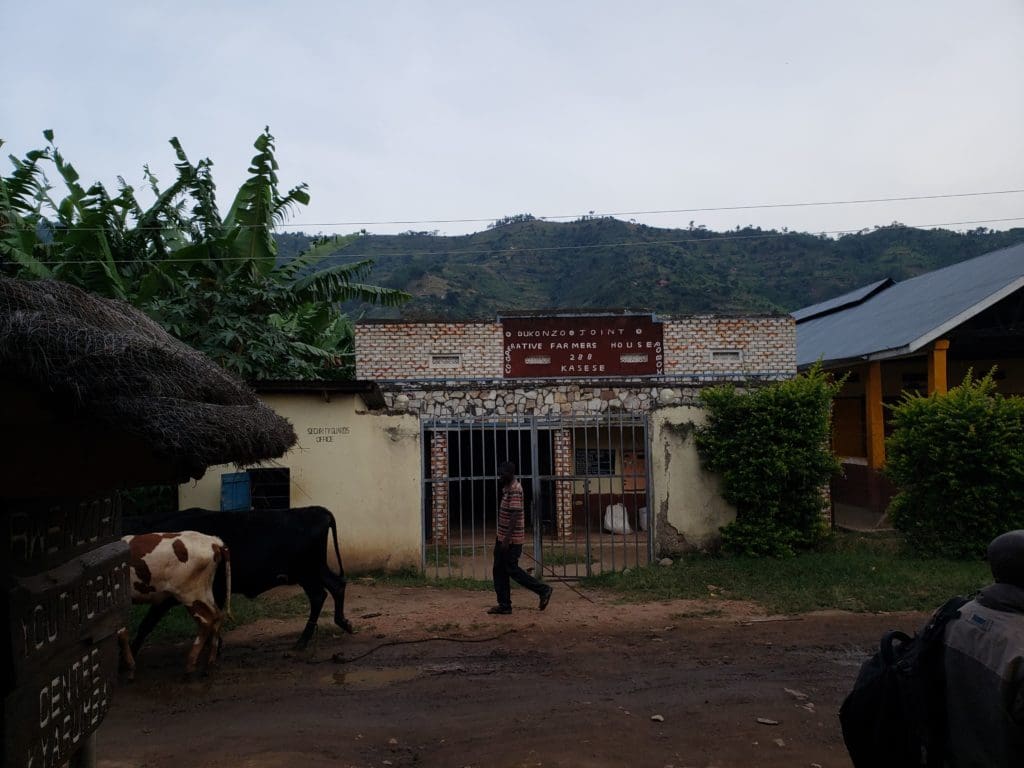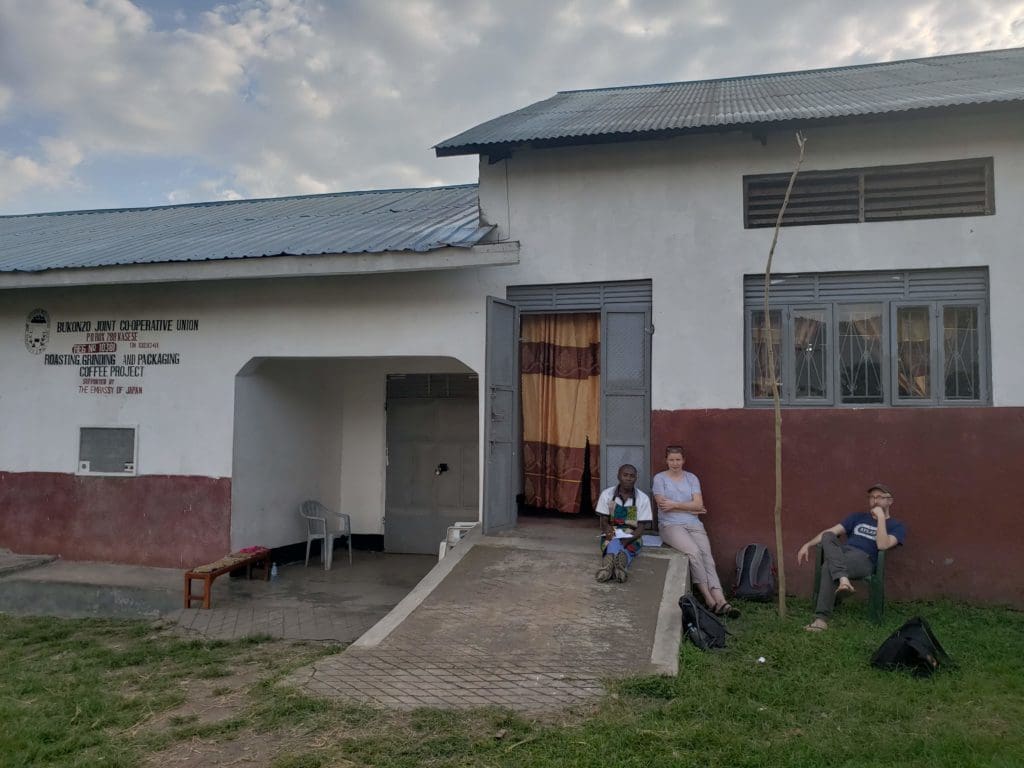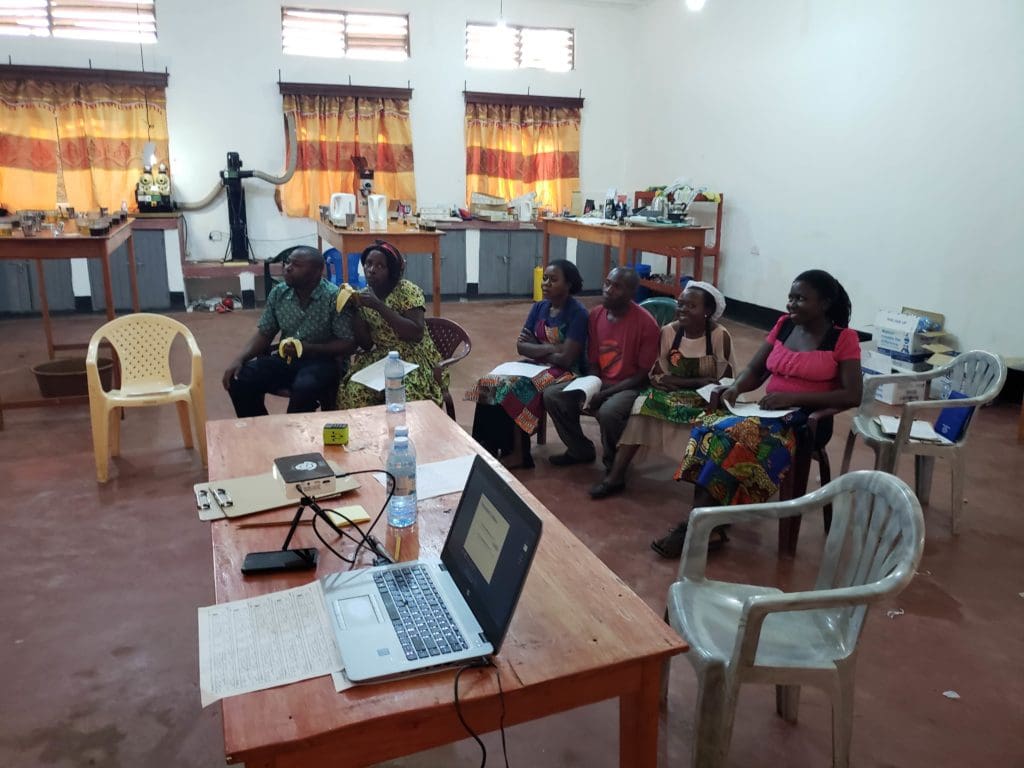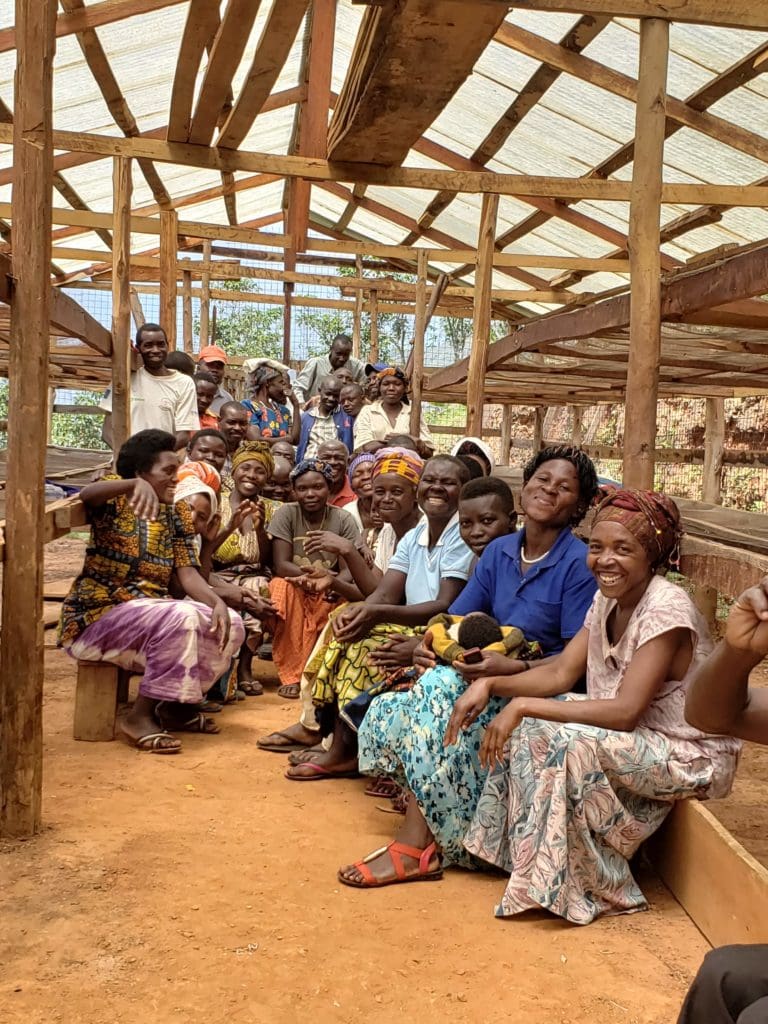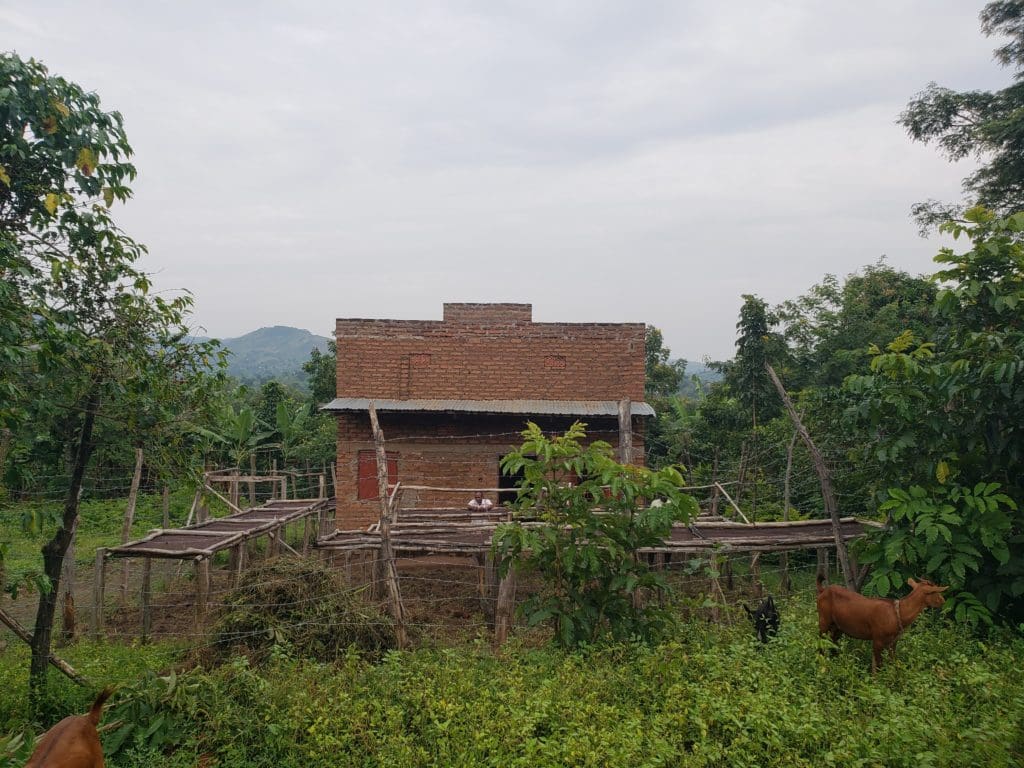Drew Billups and I just wrapped up Atlas’ yearly trip to Uganda, “the pearl of Africa” to visit current and potential coffee producer partners with friends Mollie Moison of Twin and Kate Burnett of Bridgehead Coffee. The assumed birthplace of Robusta, Uganda is home to an estimated 20 million smallholder farmers and 1.5 million coffee households. This past year Uganda exported 4.6 million bags of coffee (largely Robusta), accounting for around 3% of worldwide coffee production. Moreover, the Uganda Coffee Development Authority (UCDA) has put forth the audacious goal of exporting 20 million bags of coffee by 2025. As climate instability increases, the country’s two main coffee seasons are nearly overlapping, the dry seasons are morphing into drought seasons, and farmers across the nation are being forced to adapt their agricultural practices and schedules to combat this formidable, indiscriminate, and unpredictable phenomenon.
Despite significant challenges with climate, a low coffee market, and fierce competition for cherry prices, innovation and the relentless pursuit of quality are alive and well at Bukonzo Joint Cooperative Union (BJCU), a longtime Atlas partner and producer of FTO specialty washed arabica coffee. The primary purpose of our visit was to conduct QC trainings and run BJCU’s 4th Annual Microlot Competition. We cupped 24 samples from BJCU’s 23 micro washing stations over one day, with scores ranging from just below specialty to nearly 87 points (SCA cupping standards).
Bukonzo Joint Cooperative Union
[The following two paragraphs are guest-written by Drew Billups, Director of Education and QC at Atlas, who ran the competition and training]
The experience of this year’s cupping competition was especially gratifying for several reasons. First, we have spent the last several years working closely with BJCU to develop a cupping lab and QC program from the ground up. We helped facilitate the construction and outfitting of a lab and assisted with the development of QC systems and staff training. As a result, the first three years of cupping competitions were conducted in the lab, as it was very much emerging. This often led to lack of efficiencies and interruptions that were persistent drags on the logistics of the competition; from electrical problems, to sample roasting problems, water problems, and more. The ease, speed, and efficiency of the logistics of the competition this year were strikingly evident and impressive. This speaks not only to a lab that has come of age as a world-class cupping facility, but a QC staff that has become proficient and confident in their practices. Second, the high scoring coffees in the competition have historically been in the 86-87 range and this year was no different. It was quite gratifying to see that there were significantly fewer sample submissions with quality problems than in past years, and the average score for samples was a full 1.5 points above last year’s average. This means that quality overall is moving in the right direction!
The QC training that we provided was really the “icing on the cake” of the last four years of training with their QC staff. In the past, we have covered nuts and bolts lab subjects including, sample roasting, cupping protocol, use of the SCA form, and lab administration. This year we tied it all together by talking about what it meant to work as a cupping panel. Taking some cues from sensory science, we discussed the kinds of things that can produce bias and error in a panel and how to avoid them. We talked about the importance of working as a group and relying on data instead of opinions or strong personalities and we looked at methods for doing this that were well suited to their circumstances. We also performed a series of calibration cuppings, where the results of BJCU panelists were compared with the results of Atlas panelists who had cupped the same coffees a few weeks prior.
Between the trainings and competition, we also visited three of BJCU’s micro washing stations: Kyondo Imbibo, St. Goret, and Buthale. We spent 3+ hours huffing and puffing our way towards Buthale Washing Station, located 1,811 masl and servicing 261 members, and I was humbled anew by the remote and rugged origins of coffee chain’s first link. As we arrived at the micro washing station, the producers greeted us by song and a pictoral presentation of their washing station practices, which focus on gender equity at the farm, processing, and parchment delivery levels. Groups of 5 members rotate daily to manage the washing station, fetch water in the dry season (or use from the water tank during the rainy season), pulp, float, sort, wash, and dry the coffee until it reaches 12%, as determined by their teeth since they don’t yet have a moisture meter. Their main challenge was low production yields due to a longer than expected dry period, but their hope and enthusiasm were palpable. Many members of BJCU have vision journeys for their families, which allow them to plan for specific goals, such as sending their children to school or secure additional land for farming.
At St. Goret Micro Washing Station, we learned from their manager Pesi Muthikwa, that BJCU and the Gender Action Learning System (GALS) trainings have empowered her to increase her decision-making skills and gain confidence. She owns 1,449 coffee trees, is teaching her children how to grow coffee, and, like many other smallholder producers in the area, intercrops with banana and vanilla.
Bukonzo Joint Cooperative Union is unique in that every single member in the organization (including Paineto, their General Manager; John, their cupping lab manager; and Medress in their finance department) grows coffee trees (and knows the exact number of them) and delivers cherry to a micro washing station. This structure has allowed for a greater information flow throughout the micro washing stations, and a knowledge of coffee quality down to every coffee producer. I shared the English phrase, “Knowledge is Power” and how it applies to coffee; when a producer knows the quality of her coffee, she knows how much it is worth. We are inspired each time we visit our friends at BJCU and are already looking forward to receiving microlots on the West and East coast later this Spring.
Rwenzori Farmers Cooperative Union
We also visited Rwenzori Farmers Cooperative Union (RFCU), an umbrella cooperative producing FTO vanilla, and FT cacao and natural-process Arabica. They started as a vanilla association in 2005, and then registered as a union in 2014 with 13 primary cooperative societies (which has since grown to 16). RFCU farmers pick coffee from 1000-3000 masl, operate in 5 districts within the Rwenzori region, have 3 micro drying stations, and are eager to learn additional agricultural practices and find a market for traceable, certified, high-quality natural arabica coffee. A lot of natural arabica coffee in Uganda is sold as DRUGAR (Dried Uganda Arabica), and the cherries are strip-picked, dried directly on the ground, and sold to local buyers who process in bulk. RFCU is working diligently to change that, offering their members pruning tools, drying their cherries on raised beds, and working hard to access pre-harvest financing and bring their product to market. We were encouraged by both the quality and hard work that this group is doing with minimal resources and look forward to a potential partnership in the future.
Kaweri
Next on our itinerary was Kaweri Coffee Plantation, the first large-scale Robusta plantation in Uganda and a fellow member of the Neumann Kaffe Gruppe. The plantation sits at around 1,200 masl, and has 1,600 hectares of Robusta and 600 hectares reserved for natural forest coffee, wildlife, and native tree species. Etienne Steyn, Kaweri’s Managing Director, was an informative and warm host who gave us a crash-course in Robusta agronomy, cultivation and processing, and farm management. He has implemented inspiring programs in biodiversity (Kaweri makes their own compost from coffee pulp, husk, soil, and charcoal), implemented drought-resistant varietals and a good stumping and pruning schedule, invested in community development (feeds all workers daily meals, provides health care for employees and their families, buys produce for the meals from the local community, and has built three youth centers, and sponsors a yearly youth athletic tournament).
With 5 hectares of drying patios, 12 x 10 tons of mechanical dryers, and 800 tons of silo storage space, Kaweri Plantation sits on the opposite side of the coffee-producing spectrum as many of the farmers at BJCU. Yet both models are vital to the specialty-coffee industry and pursue quality and improved farmer livelihoods in equal fashion. As we got into our car to leave Kaweri, Etienne shouted to our driver, “Drive carefully, and take care of my family!” and I couldn’t help but smile at how joining the global Neuman family really does, at times, feel like being adopted into a giant coffee-loving family.
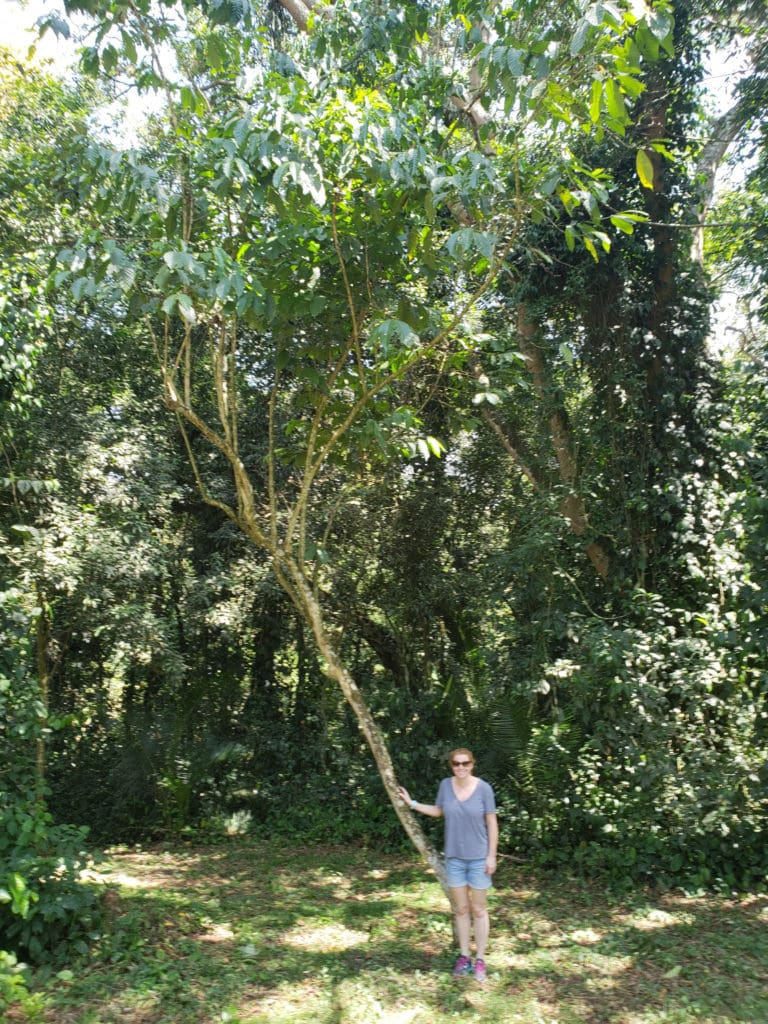
Wild/Forest Robusta tree on Kaweri. Kaweri does not harvest wild robusta, but preserves many hectares for native flora and fauna.
Bloom Initiative
Our last stop was to learn more about a sustainability initiative called Bloom, currently being implemented by Ibero, a Neumann Gruppe processer and exporter in Uganda. Program Manager Gabrielle Rosenau and her colleague Oboete Akrong kindly shared with us the Bloom project goals of sustainability through scalable growth of responsible banking and good agricultural practices. Bloom staff work directly with smallholder Robusta farmers through Depot Committees (essentially cooperatives) by offering financial literacy and innovative financing models along with access to quality fertilizers. Farmers can use mobile money (a common payment method in Uganda) to access and repay micro-finance loans and also receive trainings on how to prune and manage their trees in order to improve yields. With the volatility of the Robusta coffee market, improved tree yields can mitigate risk and serve as a good source of income even if the price for coffee cherry fluctuates. We were happy to meet a producer Gerald, along with his family, whose 450 Robusta trees looked very healthy, even though it hadn’t rained in about three weeks. This can be attributed to good agricultural practices and the appropriate application of pesticides.
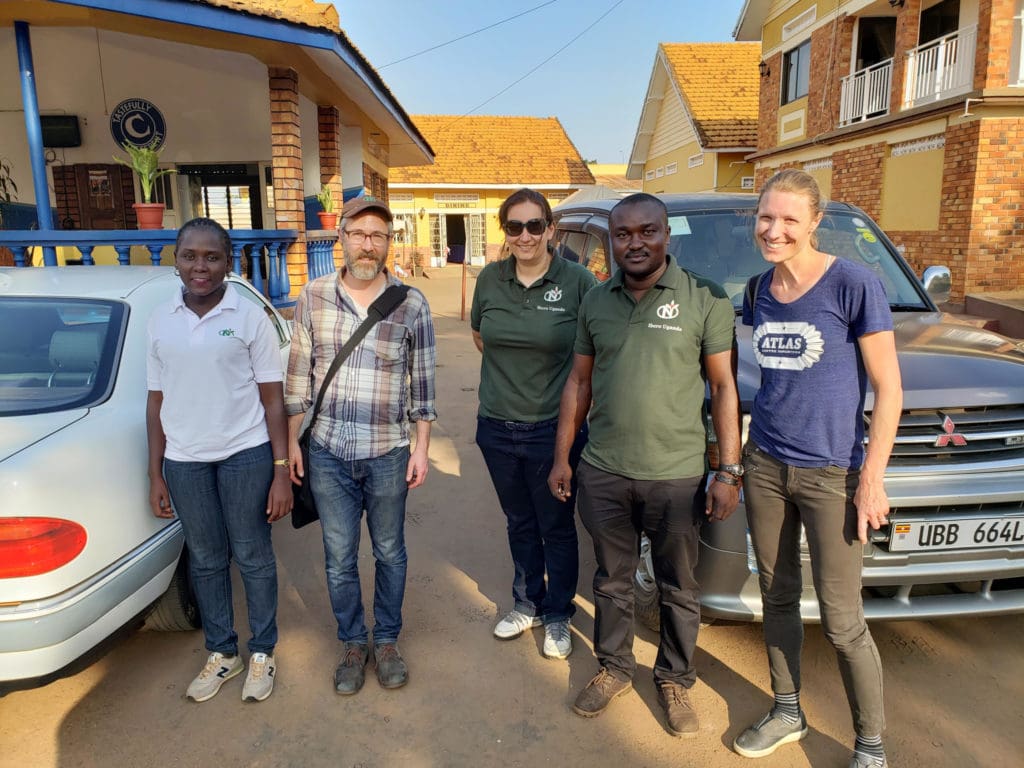 From micro washing stations in the Rwenzori mountains to large-scale Robusta plantations to mobile-money payment solutions for smallholder farmers, we were humbled and inspired by the breadth and depth of the coffee industry in Uganda and are already looking forward to our next visit. To learn more about our current and upcoming Uganda coffee offerings, or to receive samples, please give your sales rep a call.
From micro washing stations in the Rwenzori mountains to large-scale Robusta plantations to mobile-money payment solutions for smallholder farmers, we were humbled and inspired by the breadth and depth of the coffee industry in Uganda and are already looking forward to our next visit. To learn more about our current and upcoming Uganda coffee offerings, or to receive samples, please give your sales rep a call.
